Zinger Key Points
- Investors were surprised by a 3% CPI reading in the US, raising concerns about potential inflation.
- 5 sectors to avoid if inflation persists.
- Markets are swinging wildly, but for Matt Maley, it's just another opportunity to trade. His clear, simple trade alerts have helped members lock in gains as high as 100% and 450%. Now, you can get his next trade signal—completely free.
Investors in the United States received a jolt last week as the Consumer Price Index (CPI) came in at 3%, one of the hottest inflation readings in months. The CPI had been steadily declining since topping 9% in 2022, and markets had assumed that the Federal Reserve was on track to get close to the 2% target benchmark by the end of the year.
But this hot print raises some questions. Are these one-off effects from seasonal incidences or consumers getting ahead of potential tariffs? Or are specific inputs like food and energy flashing warning signs of a new inflationary wave?
While one hot CPI report is hardly cause for alarm, it did put investors and consumers on guard. The scars of 9% readings are still fresh in everyone's mind, and a few more hot prints could end any rate cut hopes for 2025. If inflation reignites, some sectors will be better prepared than others.
Here are five sectors to consider avoiding if inflation stays high.
Consumer Discretionary
When inflation roared following the COVID-19 pandemic, consumers buckled down and focused on essentials over luxuries and experiences. Inflation frequently hurts companies in the consumer discretionary sectors that depend on infrequent purchases or have more affordable substitutes. It also erodes purchasing power, giving consumers less income for disposable goods.
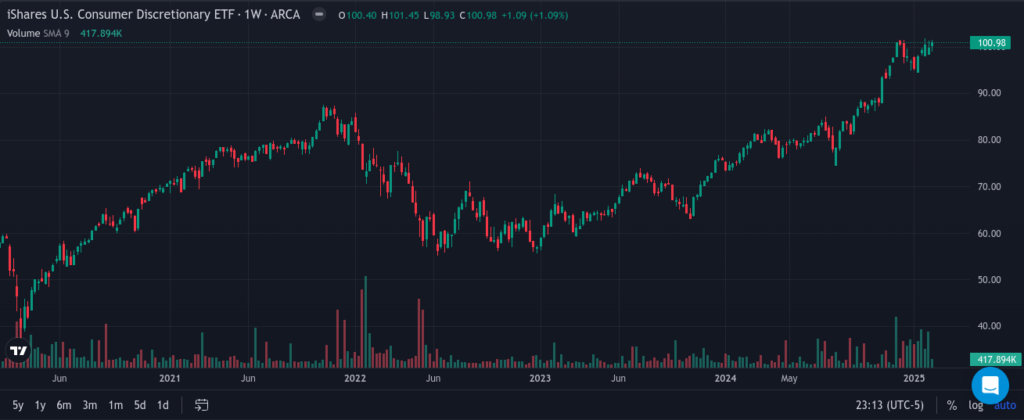
The iShares US Consumer Discretionary ETF IYC chart shows that the sector topped out in November 2021 and failed to make new highs for nearly three years. The ETF has increased 28% over the last 12 months as CPI receded closer to 2%, but a new wave could stifle the sector, especially in industries like automakers, home builders, travel companies, and luxury apparel brands. If inflation continues moving higher in the next few months, consider reducing exposure to stocks like cruise lines, hotels, and specialty retailers.
Real Estate Investment Trusts (REITs)
Thanks to their strong dividends, REITs are sometimes considered an inflation hedge. However, inflation also tends to increase borrowing costs through higher rates, and debt-laden companies like REITs don't enjoy paying more to finance their activities. When borrowing costs rise, REITs may choose to slow down expansion or stop increasing dividend payouts. High rates can also lock homebuyers out of the market as they wait for better financing options.
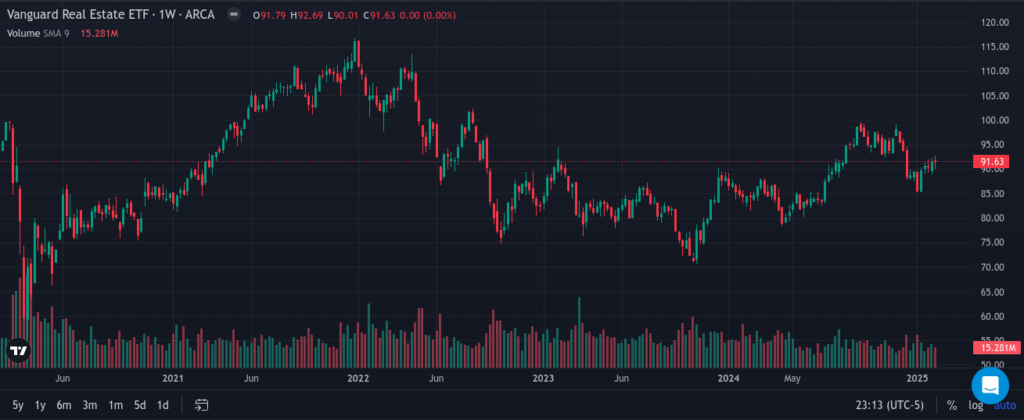
The Vanguard Real Estate ETF VNQ lost 37% between December 2021 and October 2023, showing that REITs aren't immune to hot CPI prints and Fed rate hikes. If inflation stays high, REITs that own high-vacancy properties or are located in stagnant markets would be most at risk of a drawdown.
Commercial REITs are especially at risk as companies often headcount when rates are high, and work-from-home continues to become more standard at large companies (although some are fighting to bring workers back to the office). When researching REITs, avoid companies with high debt levels, a poor property portfolio, and high dividend payout ratios.
Biotechnology
The biotech sector is always a tumultuous place to invest, and periods of high inflation and uncertainty can exacerbate that fact by several degrees. Biotech innovations are expensive and time-consuming, with results often coming months or years down the road. When investors adopt short-term mindsets, sectors like biotech that require extended periods of testing and trials lose favor.
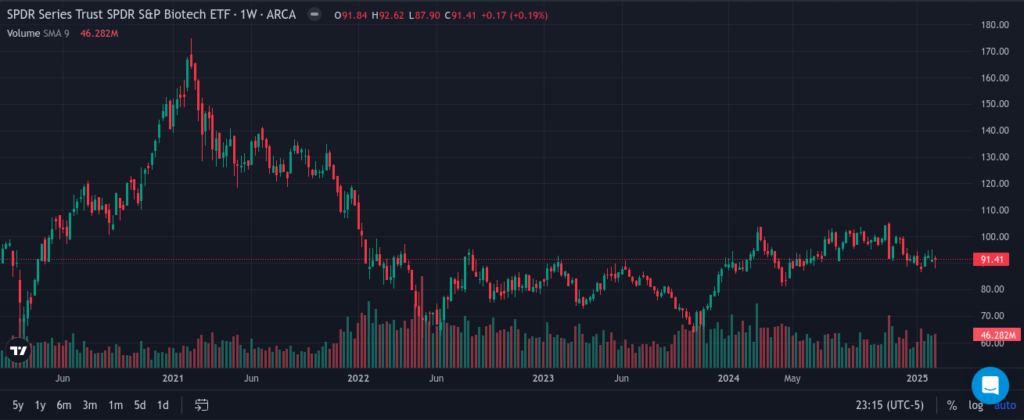
The biotech sector has yet to recover from the bear market of 2022, and persistent inflation and high rates could spell more trouble for the beleaguered industry. Biotech companies chew up capital like dogs on a steak, requiring extensive upfront investment in research and development.
Many early-stage biotechs have no revenue and rely solely on debt to stay afloat. When the cost of supplies and financing rises, these companies often need to sell more stock than they'd prefer, which dilutes existing shareholders. Coupled with the fact that investors seek to reduce risk in uncertain periods, the biotech sector looks dicey to start 2025.
Industrials
Like biotech, the industrial sector has two significant headwinds working against it when inflation is high: long timeframes and capital-intensive projects. Industrial companies build homes, produce heavy equipment, or transport valuable raw goods, all requiring lots of pre-planning and capital.
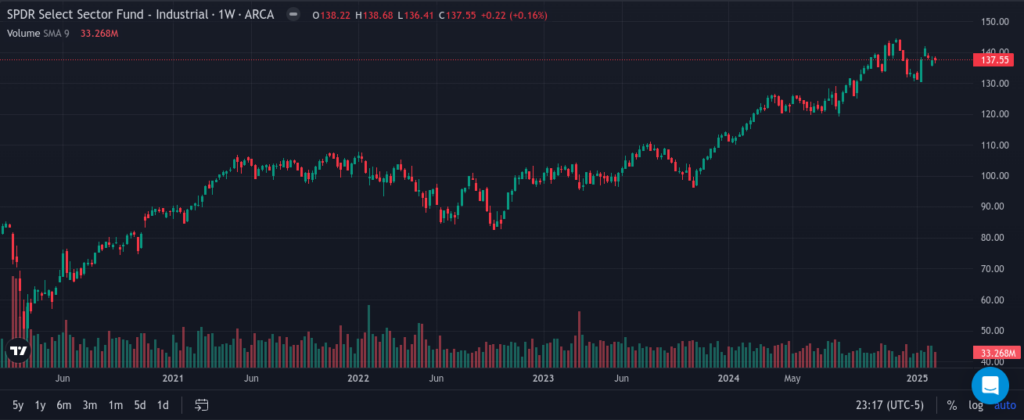
The SDPR Sector Select Industrial Fund XLI has enjoyed a nice rebound after trading in a tight range throughout 2022 and 2023. However, if inflation also rebounds, companies in this sector will be forced to pay higher capital costs and may have to put projects on hold. The industrial sector is highly cyclical, and slowdowns often trickle into other market sectors.
Additionally, industrial companies employ large workforces and often have weaker pricing power than sectors less reliant on operational capital. As mentioned above, expensive and time-consuming is a bad combination when inflation or interest rates are high.
Utilities
Utilities are supposed to be a safe sector during market drawdowns – typically. They are a safe haven during bear markets because of their low volatility and reliable dividends. But your typical market drawdown doesn't involve high rates and CPI over 3%, and utilities aren't always the safest hideout in those conditions. The performance of the SDPR Sector Select Utilities ETF XLU below shows that bear markets aren't always a boon to the sector.
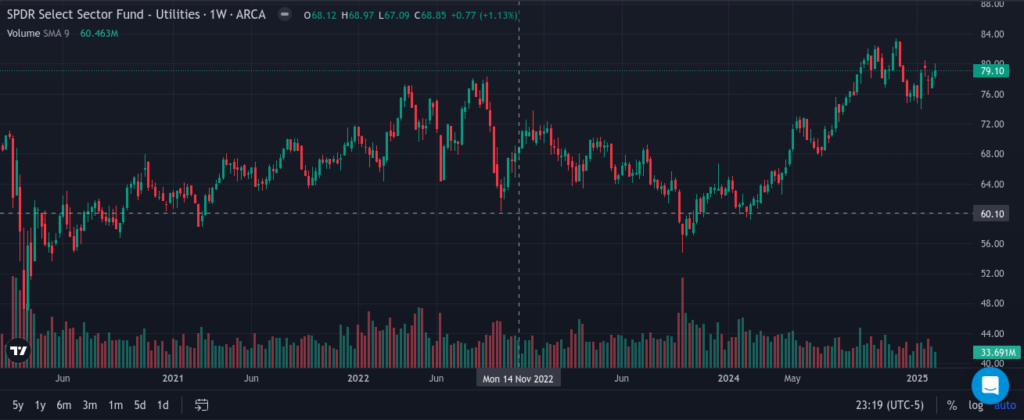
The appeal of utilities comes not from capital appreciation but from the quarterly dividends. Income through dividends creates a bond-like instrument for many investors, who pair utilities with riskier stocks like tech stocks to have both growth and income assets. However, if inflation rises, rates follow, and high rates will make actual bonds like US Treasuries and corporate debt more appealing.
Suppose investors can get a similar yield from a US Treasury bill as a utility stock. In that case, they'll naturally lean toward the Treasury bill, which locks in a coupon payment and guarantees a return of capital once the term ends. Additionally, utilities are debt-laden and subject to heavy regulatory scrutiny. Regulatory lag could hurt these companies’ bottom lines as price increases often must be approved by law.
One Chart. One Setup. Big Profit Potential.
In a market filled with noise, our ‘Chart of the Day' delivers pure signal—highlighting high-probability trades based on expert analysis and deep market insights. Get tomorrow's best setup before it moves. Get My Daily Chart
Image via Shutterstock
Edge Rankings
Price Trend
© 2025 Benzinga.com. Benzinga does not provide investment advice. All rights reserved.
Trade confidently with insights and alerts from analyst ratings, free reports and breaking news that affects the stocks you care about.